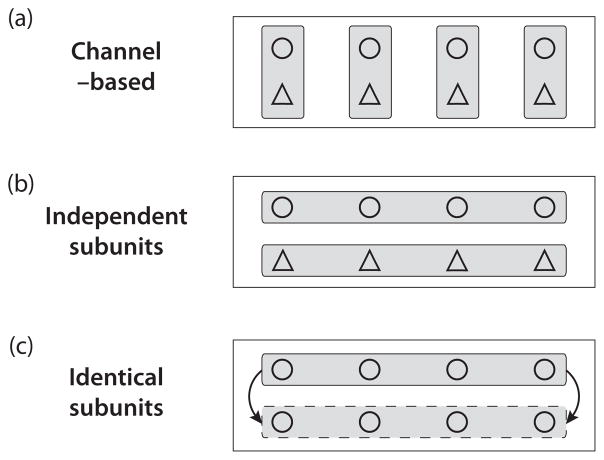FIG. 1.
Illustration of conceptual differences between channel-based and subunit-based models. In this example, each channel consists of two subunits, “△” and “○.” (a) In the channel-based model, subunits are first grouped together to form channels (vertical rectangles) and the ionic conductance is determined by the fraction of channels in the conducting state. (b) In the independent subunits (IdS) approach, the subunits are divided into two classes (horizontal rectangles) and the fraction of open subunits is computed by averaging over all subunits in each class. The proportions of open subunits in each class are then used to approximate the fraction of channels in the conducting state. (c) Identical subunit (InS) models also average across all subunits in a class, but assume that both subunit classes are identical.

